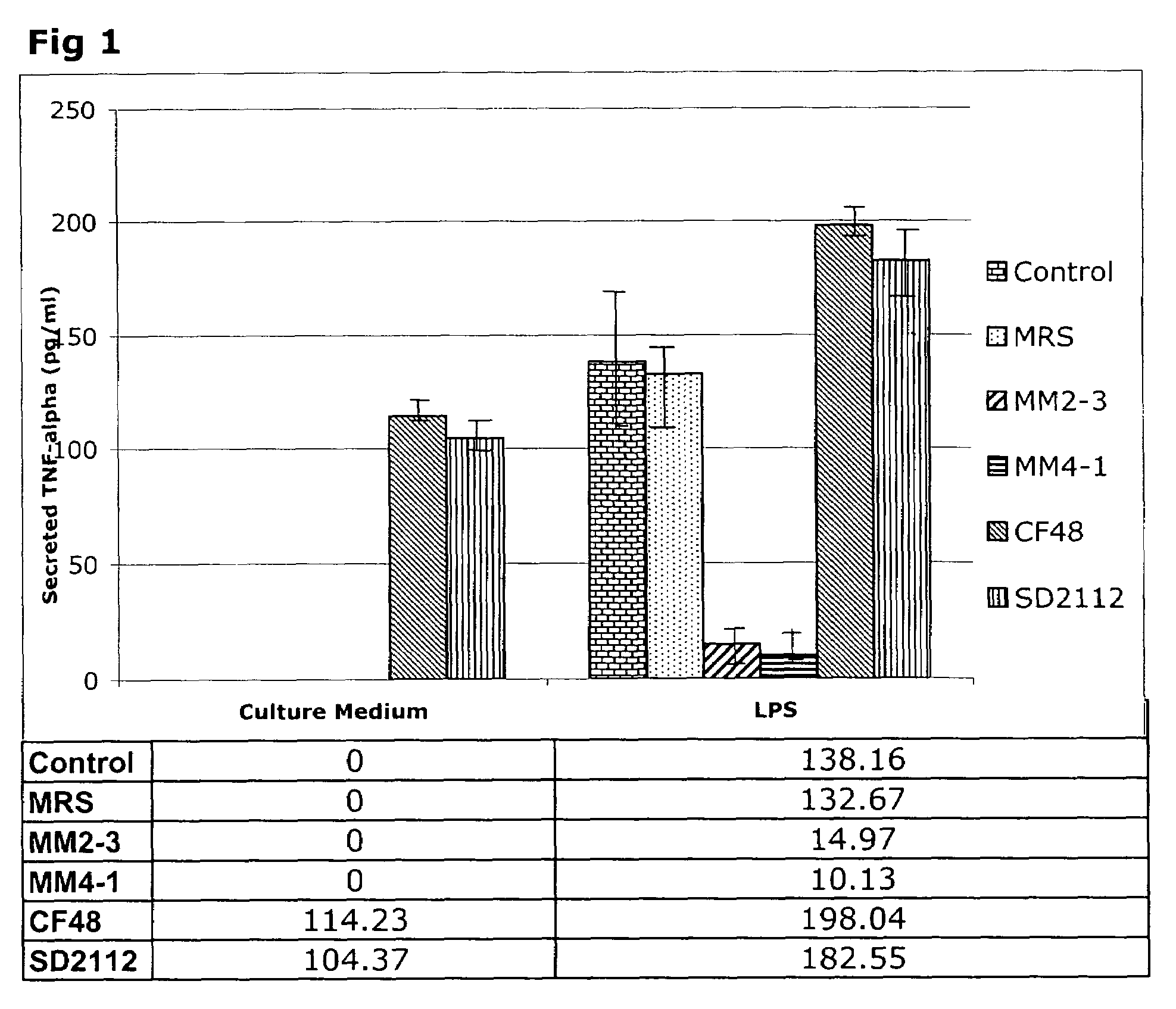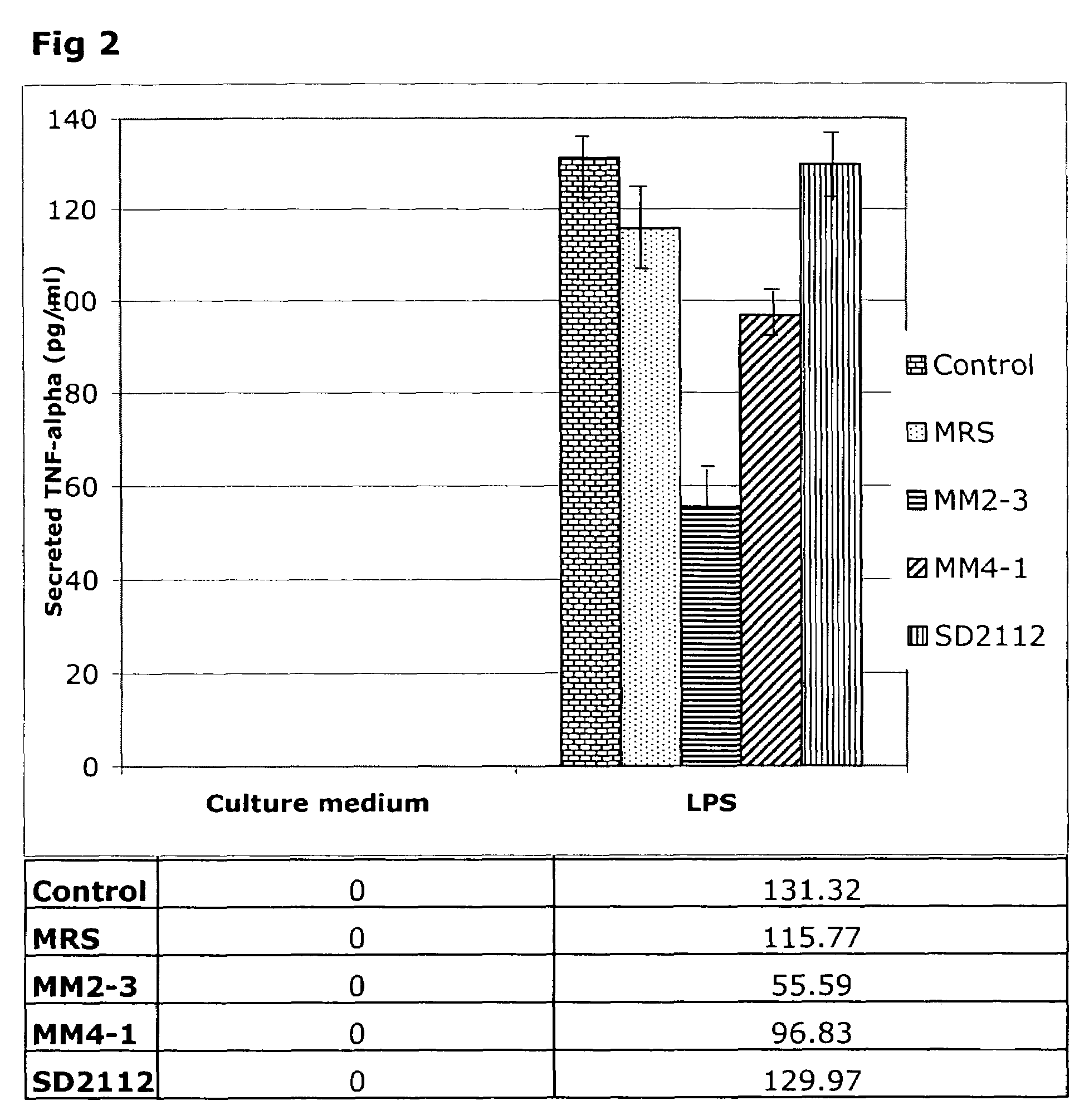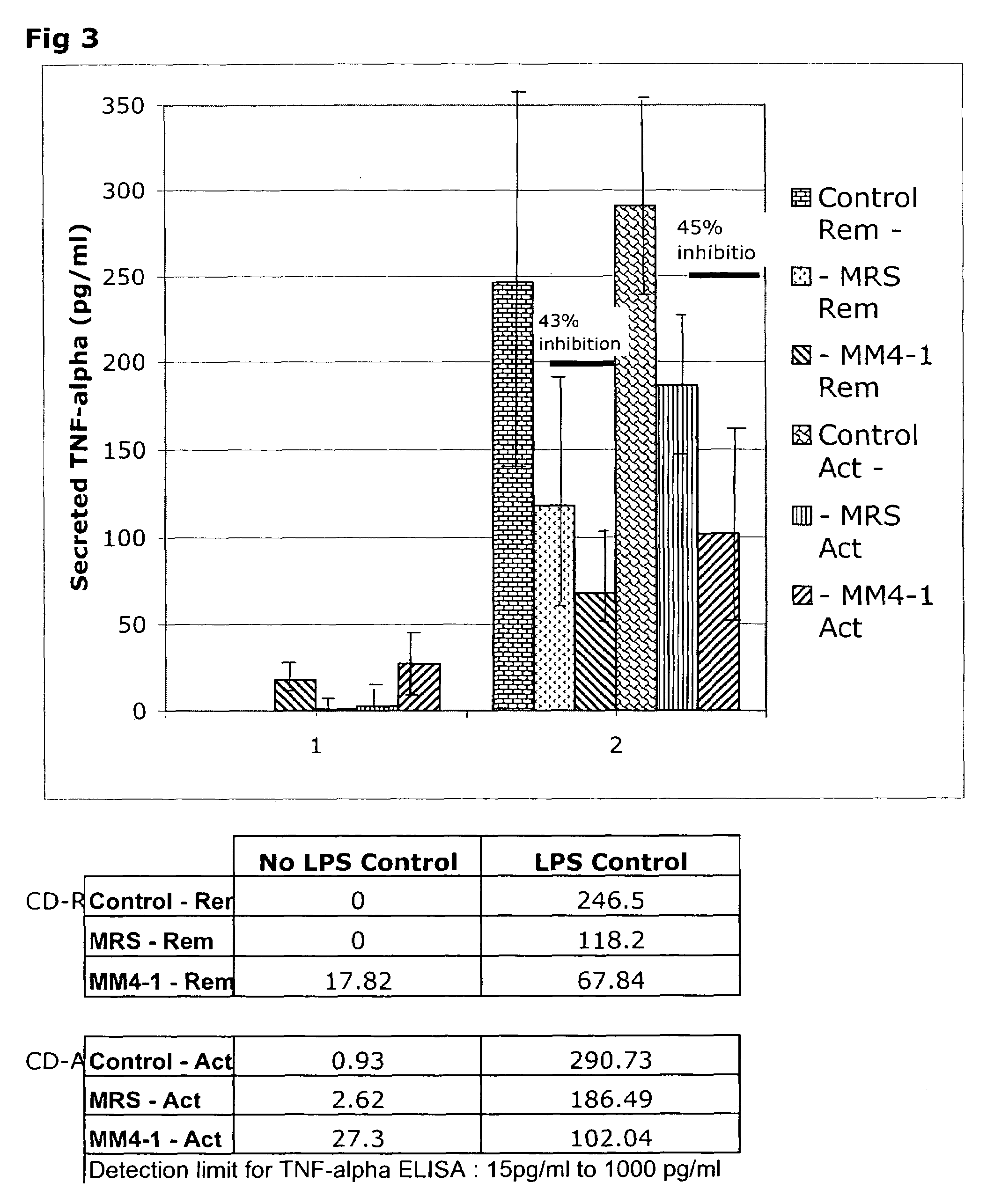Selection and use of lactic acid bacteria for reducing inflammation in mammals
a technology of lactic acid bacteria and lactic acid, which is applied in the field of nonpathogenic antiinflammatory bacterial strains, can solve the problems of ulcers, reduced appetite, increased risk of infection, and increased risk of infection, and achieves the effect of reducing inflammation
- Summary
- Abstract
- Description
- Claims
- Application Information
AI Technical Summary
Benefits of technology
Problems solved by technology
Method used
Image
Examples
example 1
Selection of Anti-Inflammatory Strains
[0034]THP-1 cells were incubated together with either control media or conditioned media (L-CM) from the growth of selected L. reuteri strains, L. reuteri ATCC PTA 4659, L. reuteri ATCC PTA 6475, L. reuteri ATCC 55730 and L. reuteri strain CF48-3A. The conditioned media (L-CM) are cell-free supernatants from 9-hour or 24-hour cultures of each of the L. reuteri cultures. THP-1 cells were stimulated with either control medium or E. coli-derived LPS (which leads to the generation of TNFα in a normal inflammatory response) during a 3.5 hour incubation after which the cells were removed and the supernatants assayed for TNFα levels using an ELISA technique.
[0035]Materials:
THP-1 leukemic monocytic cell line (ATCC, cat number TIB202)
RPMI 1640 Medium (Gibco-Invitrogen)
Fetal Bovine Serum (Gibco-Invitrogen)
Penicillin-Streptomycin solution (Sigma)
E. coli Serotype O127:B8 Lipopolysaccharide (Sigma, cat number L3137)
TNF-alph / TNF-SFII human DuoSet ELISA Develo...
results — example 1
Results—Example 1
[0041]Incubation of THP-1 cells with 24-hour L-CM from L. reuteri ATCC PTA 4659, L. reuteri ATCC PTA 6475 strains in the absence of LPS did not lead to the generation of TNFα in the incubation medium (FIG. 1). Surprisingly, L-CM from L. reuteri ATCC 55730 and L. reuteri strain CF48-3A stimulated the production of TNFα by the THP-1 cells to levels similar to those seen with LPS alone. Thus, the L. reuteri strains differ in their ability to stimulate pro-inflammatory TNFα production by resting THP-1 monocytes.
[0042]Addition of LPS to the THP-1 cells in the absence of L-CM led to the generation of 138 pg / ml TNFα during the 3.5 hour incubation period. This is the expected inflammatory response of the THP-1 cells to the toxin. Addition of the growth medium (MRS), which acts as a control for the L-CM additions, led to the generation of 132 pg / ml TNFα and thus MRS did not interfere with the response to LPS. The addition of 24-hour L-CM from L. reuteri ATCC PTA 4659 or L. r...
example 2
Negative Selection Prep for Monocyte Cells
[0044]The Monocyte Isolation Kit II (Miltenyi Biotec, Inc. 12740 Earhart Avenue, Auburn, Calif. 95602 (800) 367-6227; http: / / www.miltenyibiotec.com / index.php?, order number 130-091-153) is an indirect magnetic labeling system for the isolation of untouched monocytes from human peripheral blood mononuclear cells (PBMC). Non-monocytic cells, i.e., T cells, B cells, NK cells, dendritic cells, and basophils are indirectly magnetically labeled using a cocktail of biotin-conjugated antibiotics against CD3, CD7, CD16, CD19, CD56, CD123 and Glycophorin A, and Anti-Biotin MicroBeads. In between the two labeling steps, no washing steps are required. The magnetically-labeled non-monocytes are depleted by retaining them on a MACS® Column in the magnetic field of a MACS Separator, while the unlabeled monocytes pass through the column. Isolation of relatively enriched unlabeled monocytes is achieved by depletion of the magnetically labeled cells. Level of...
PUM
| Property | Measurement | Unit |
|---|---|---|
| volume | aaaaa | aaaaa |
| pH | aaaaa | aaaaa |
| labeling volume | aaaaa | aaaaa |
Abstract
Description
Claims
Application Information
 Login to View More
Login to View More - R&D
- Intellectual Property
- Life Sciences
- Materials
- Tech Scout
- Unparalleled Data Quality
- Higher Quality Content
- 60% Fewer Hallucinations
Browse by: Latest US Patents, China's latest patents, Technical Efficacy Thesaurus, Application Domain, Technology Topic, Popular Technical Reports.
© 2025 PatSnap. All rights reserved.Legal|Privacy policy|Modern Slavery Act Transparency Statement|Sitemap|About US| Contact US: help@patsnap.com



